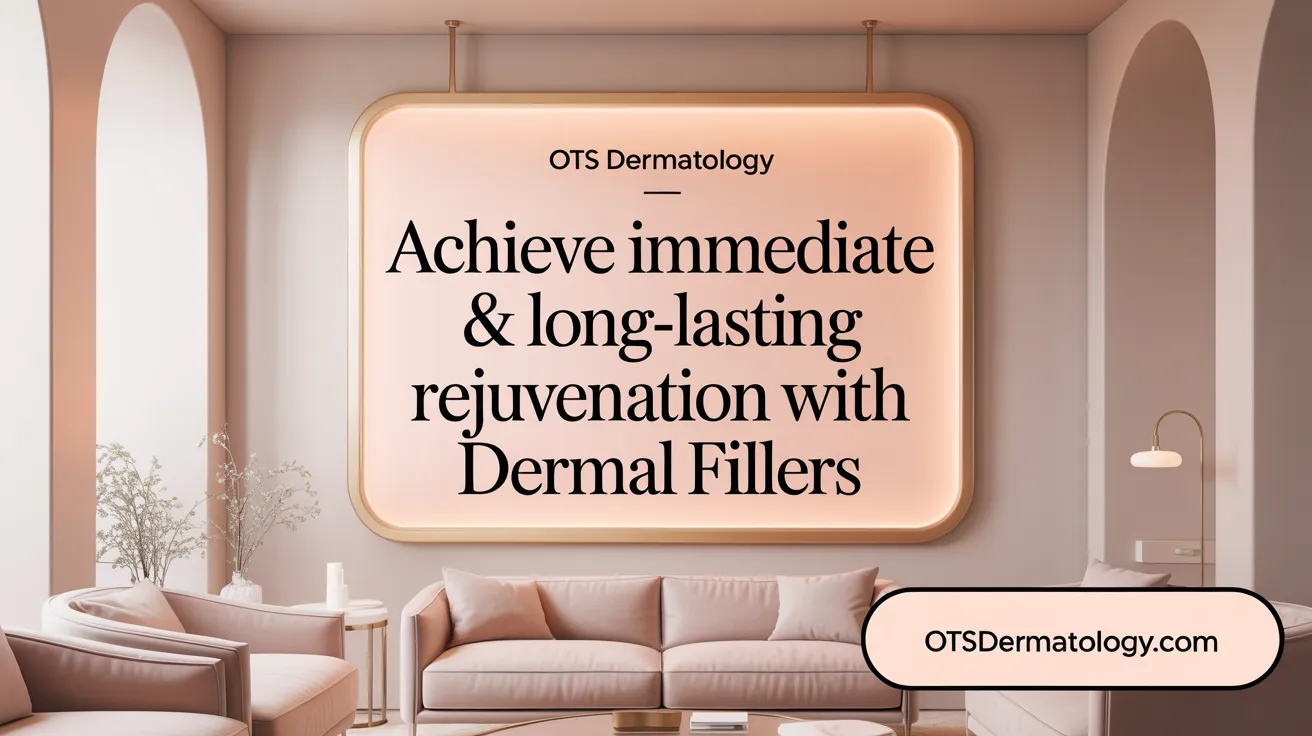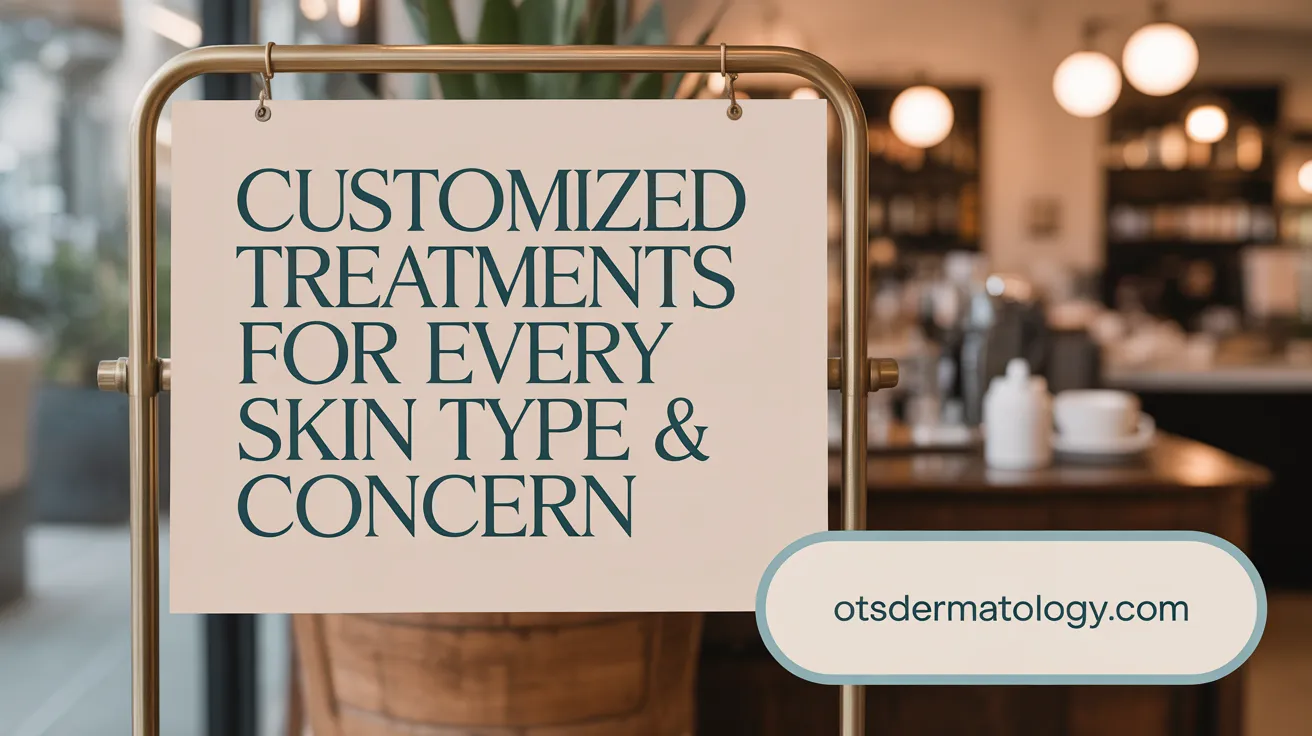Introduction to Modern Cosmetic Dermatology
Overview of Cosmetic Dermatology Scope
Cosmetic dermatology focuses on enhancing the appearance of the skin through medical and aesthetic treatments. It addresses a wide array of concerns including wrinkles, scars, pigmentation issues, hair loss, and signs of aging. Treatments range from injectables like Botox and dermal fillers to laser therapies, chemical peels, microneedling, and body contouring. This broad spectrum highlights the field’s commitment to both skin health and beauty enhancement.
Importance of Personalized Care in Dermatology
Personalized care is central to effective cosmetic dermatology. Clinics like Skin City Lab and Advanced Dermatology emphasize thorough consultations to tailor treatments based on individual skin types, concerns, and goals. Specialized providers recognize unique factors such as ethnic skin variations or specific medical conditions, ensuring safe and optimal results. This patient-focused approach fosters better outcomes and satisfaction.
Emergence of Diverse Treatment Options Beyond Botox and PRP
Beyond well-known injectables such as Botox and platelet-rich plasma (PRP) therapy, modern cosmetic dermatology offers an expanding array of options. Techniques including laser resurfacing, CoolSculpting, chemical peels, and microneedling enable targeted treatment of skin texture, volume loss, and body contouring. These options provide patients with customized pathways to rejuvenation and self-confidence, reflecting advances in technology and dermatological science.
Beyond Botox: Dermal Fillers and Advanced Injectables for Natural Volume and Rejuvenation

What are the cosmetic uses and benefits of dermal fillers beyond Botox?
Dermal fillers like Radiesse dermal fillers, Juvederm fillers, Restylane fillers, and Sculptra fillers serve as advanced cosmetic injectables designed to restore youthful volume and smooth facial wrinkles. Unlike Botox treatments, which relax muscles to reduce expression lines, these fillers physically replenish lost facial fat and contour areas such as cheeks, lips, and under-eye hollows.
Radiesse stands out by providing immediate volumizing effects combined with stimulation of the body's natural collagen production over time. This dual action results in both instant enhancement and longer-lasting skin rejuvenation services, improving texture and firmness.
Other fillers like Juvederm and Restylane use hyaluronic acid to add softness and hydration while lifting areas prone to sagging. Sculptra promotes gradual collagen growth, giving subtle and natural-looking volume restoration.
How are injectable treatments personalized and ensured safe?
All these injectable treatments are FDA-approved cosmetic injectables, ensuring they meet safety and efficacy in cosmetic treatments standards. Clinics like Skin City Lab emphasize personalized cosmetic dermatology and consultation process for injectables, tailoring treatment choices to each patient’s facial structure, desired results, and skin health status.
The minimally invasive nature of these procedures means treatments are quick, typically with little to no downtime, allowing patients to resume normal activities shortly after. These minimally invasive Botox procedures demonstrate how cosmetic injectables in New York City and beyond prioritize patient convenience and comfort.
What should patients expect about treatment effects and recovery?
Effects from dermal fillers can last anywhere from six months to 18 months depending on the type used and area treated. Patients experience immediate improvements with gradual enhancements due to collagen stimulation, especially with Radiesse dermal fillers and Sculptra collagen stimulation.
Recovery is usually straightforward — some mild swelling or redness may occur but resolves quickly. This makes dermal fillers an attractive option for those wanting noticeable yet natural rejuvenation with minimal disruption to their daily routine.
Innovative Skin Rejuvenation Techniques: Microneedling, Chemical Peels, and Laser Therapies

How do microneedling, chemical peels, and laser treatments contribute to skin rejuvenation?
Microneedling is a minimally invasive procedure that creates tiny, controlled injuries in the skin to stimulate collagen and elastin production. This collagen induction therapy helps reduce fine lines, diminish scars, tighten pores, and even out hyperpigmentation, resulting in improved skin texture and elasticity suitable for most skin types.
Chemical peels work by exfoliating damaged layers of skin, revealing fresher, healthier skin beneath. They are effective in treating wrinkles, sunspots, melasma, and uneven pigmentation. Peels come in varying depths—from superficial to deep—allowing personalized cosmetic dermatology treatment planning based on individual skin concerns and sensitivity.
Laser therapies use advanced technologies such as fractional laser resurfacing and FDA-approved devices like Fraxel and Pixel CO2 lasers. These treatments target pigmentation irregularities, age spots, redness, acne scars, and help in skin tightening by stimulating collagen regeneration. Importantly, specialized laser options are available to safely treat ethnic and darker skin tones, enhancing their suitability across diverse populations.
Together, these therapies provide a comprehensive approach to skin rejuvenation services. They are designed to address concerns such as sun damage, wrinkles, uneven skin tone, and texture issues, while being tailored through personalized cosmetic dermatology treatment planning to each patient's unique skin type and aesthetic goals. Proper consultation ensures safety and maximizes treatment efficacy for lasting, natural-looking results.
Platelet-Rich Plasma (PRP): Expanding Applications Beyond Facial Rejuvenation
What is PRP and why is it considered autologous?
Platelet-rich plasma (PRP) therapy utilizes a concentrated portion of a patient's own blood, rich in platelets and growth factors like PDGF, TGF-β, and VEGF. This autologous nature means PRP is derived from the patient’s blood, reducing risks of allergic reactions or disease transmission. Learn more about the PRP autologous preparation and concentration of growth factors.
How does PRP benefit skin beyond anti-aging?
PRP is effective in cosmetic dermatology for reducing wrinkles and acne scars, improving skin tone and texture. It stimulates natural collagen production and tissue regeneration, leading to healthier, rejuvenated skin. These effects extend beyond simple wrinkle reduction to enhancing overall skin quality.
Can PRP treat hair loss effectively?
PRP therapy is increasingly used to treat male and female pattern baldness by injecting growth-factor-rich plasma into the scalp. This stimulates hair follicle regeneration, improves blood flow, and supports new hair growth. Clinical studies and FDA approval back its safety and effectiveness for alopecia. Explore PRP for hair loss and hair regrowth benefits.
What are the treatment protocols, safety measures, and patient eligibility?
PRP involves drawing blood, centrifuging it to concentrate platelets, and injecting the plasma into target areas like face or scalp. It is minimally invasive with low complication risk. However, candidates with blood disorders, low platelet counts, infections, pregnancy, or cancer treatments may not qualify. Multiple sessions tailored to individual patient needs are common. For more, see PRP treatment process and safety.
When do patients see results, and why is personalization important?
Visible improvement in skin texture and hair growth can appear within weeks, but full results typically take up to six months for facial rejuvenation and two to three months for hair regrowth. Personalized treatment plans optimize outcomes, considering patient health, skin condition, and hair loss severity. Further details on customized PRP treatment plans and timeline for results.
| Aspect | Description | Notes |
|---|---|---|
| PRP Composition | Autologous plasma rich in platelets/growth factors | Reduces immune risk; see PRP dermatology applications |
| Skin Applications | Wrinkles, acne scars, skin tone, texture | Stimulates collagen PRP for skin rejuvenation |
| Hair Loss Use | Male/female pattern baldness | FDA-approved, natural alternative; PRP hair therapy |
| Treatment Process | Blood draw, centrifuge, inject | Usually multiple sessions; see PRP process |
| Safety & Eligibility | Minimally invasive, contraindicated in certain conditions | Personalized assessment needed; consider safety |
| Result Timeline | Weeks to months for full effect | Varies by treatment area; timeline info |
Comprehensive Cosmetic Dermatology Services: Integrating Body Contouring and Specialized Skin Treatments
What advanced cosmetic treatments complement traditional skin procedures for comprehensive aesthetic care?
Modern cosmetic dermatology has expanded beyond facial treatments to include innovative body contouring and specialized skin therapies that enhance overall appearance and skin health.
Body Contouring Techniques
Non-surgical options such as CoolSculpting and High Intensity Focused Electromagnetic (HIFEM) energy therapies have become popular for reshaping the body. CoolSculpting works by freezing and eliminating stubborn fat pockets without surgery. Meanwhile, HIFEM technology strengthens and tones muscles, improving body contours with minimal downtime.
Addressing Submental Fat: Kybella Injections
Submental fat, commonly known as a double chin, can be targeted with Kybella—a non-surgical injectable treatment that dissolves fat cells under the chin. This approach offers a minimally invasive alternative to liposuction, contributing to a more defined jawline and facial profile.
Specialized Treatments for Skin Concerns
Advanced procedures are available to treat skin discoloration issues like melasma and brown spots, as well as scars and stretch marks. Varicose veins, which can affect skin health and appearance, are also addressed with specialized therapies. These treatments complement traditional facial rejuvenation efforts, supporting a harmonious and natural-looking result.
Advanced Laser Hair Removal
Laser hair removal technology has advanced to be safe and effective for all Fitzpatrick skin types (I to VI). This ensures that patients of diverse skin tones can benefit from long-lasting hair reduction, enhancing overall skin smoothness and comfort.
Integrating Medical and Aesthetic Dermatology
Optimal cosmetic outcomes arise from combining medical dermatology—addressing underlying skin health—with aesthetic treatments. This integrated approach allows for personalized cosmetic dermatology treatment planning that target both cosmetic goals and skin wellness. Dermatology practices emphasize consultation and customization to ensure treatments like Botox, fillers, laser therapies, and body contouring work synergistically.
Through this comprehensive spectrum of services, patients achieve improved skin texture, tone, and silhouette while maintaining skin integrity and health. Such individualized, multidisciplinary programs reflect the latest advances in cosmetic dermatology, offering natural, effective, and lasting aesthetic enhancement.
The Role of Personalized Care and Expertise in Achieving Optimal Cosmetic Dermatology Outcomes
Why is personalized care crucial in cosmetic dermatology and how is it implemented?
Personalized care is fundamental in cosmetic dermatology because every patient's skin type, conditions, and aesthetic goals are unique. Leading dermatology practices in Glenview and Chicago emphasize the involvement of board-certified dermatologists and specialized providers who carry out comprehensive consultations. These sessions assess the individual's skin health, lifestyle, and cosmetic aspirations to devise a fully customized treatment plan, as highlighted in Personalized cosmetic dermatology treatment planning, Personalized cosmetic dermatology treatment planning, Personalized cosmetic dermatology treatment planning, Personalized cosmetic dermatology treatment planning, Personalized cosmetic dermatology treatment planning, Personalized cosmetic dermatology, and Cosmetic Dermatology in Chicago.
Treatment customization often involves a combination of advanced procedures such as Botox treatments, dermal fillers, laser therapies, chemical peels, and body contouring. This tailored approach ensures that interventions align precisely with the patient's needs, maximizing safety and efficacy.
Safety protocols are rigorously maintained, including the exclusive use of FDA-approved cosmetic injectables like Radiesse dermal fillers and Botox wrinkle reduction, alongside sterile techniques to prevent infection. Providers carefully review patient history to identify contraindications, particularly for treatments like PRP and deep chemical peels.
Importantly, many practices integrate medical dermatology with cosmetic treatments to address underlying skin issues and promote overall skin health. This holistic strategy supports lasting improvements in skin appearance alongside enhanced wellness, as seen in Northwestern Medicine Glenview Dermatology.
Finally, patient education plays a vital role. Patients receive clear guidance on post-treatment care—such as sun protection, avoiding makeup or irritants immediately following procedures, and recognizing signs to consult their physician. This education helps maintain treatment results and reduces adverse effects, driving optimal, sustained outcomes in cosmetic dermatology, as detailed in A Beginner’s Guide to Cosmetic Dermatology Treatments.
Conclusion: Embracing a Holistic and Personalized Approach to Cosmetic Dermatology
Comprehensive Cosmetic Dermatology Treatments
Modern cosmetic dermatology offers a wide spectrum of treatments beyond the well-known Botox and PRP therapies. Clinics provide options like dermal fillers (Juvederm, Radiesse, Restylane), laser resurfacing, chemical peels, microneedling, CoolSculpting, and body contouring—each targeting specific concerns such as wrinkles, volume loss, skin texture, and stubborn fat.
Personalized Treatment Plans for Natural and Lasting Outcomes
A cornerstone of effective cosmetic dermatology is tailoring treatments to the individual’s skin type, aesthetic goals, and health status. Providers emphasize detailed consultations to develop personalized strategies that enhance natural beauty, promote long-term skin health, and minimize risks. Combination treatments using advanced techniques further improve results.
Future Innovations and Evolving Care
Ongoing advancements, including the integration of growth factor therapies, non-invasive technologies, and precision laser treatments, hold promise for more effective, safer, and longer-lasting cosmetic outcomes. As the field evolves, embracing a holistic approach that balances aesthetics and skin wellness will continue to define state-of-the-art dermatologic care.
